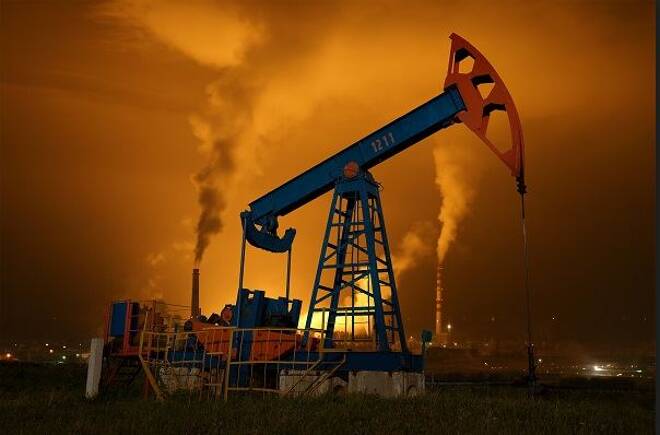Advertisement
Advertisement
Crude Oil Price Analysis for September 19, 2017
By:
WTI futures whipsawed hitting a high of 50.33, before settling back down below the 50 handle, which is fractionally higher on the session. The initial
WTI futures whipsawed hitting a high of 50.33, before settling back down below the 50 handle, which is fractionally higher on the session. The initial gains followed Friday’s latest rig-count data out the U.S. showing an unexpected seven-rig production halt. This follows recently upgraded global demand forecasts by OPEC and the IEA, and a pickup in demand as hurricane-afflicted refinery plants come back on line.
Technicals
Crude oil prices attempted to take out the prior week’s gains which is seen as resistance at 50.50. Prices were unable to breach the recent highs and generated an outside day higher, which is a higher high and a lower low and a higher close. This is generally a reversal pattern, but since prices are on the rise, this actually reflects indecision. Support on crude oil prices is seen near the 10-day moving average at 48.97. Prices broke out last week, but have not experienced a following through after piercing through trend line resistance near 49.40. Momentum on crude oil prices remains positive as the MACD (moving average convergence divergence) histogram prints in the black with an upward sloping trajectory which points to higher prices for crude oil. The relative strength index (RSI) which is a momentum oscillator that measures accelerating and decelerating momentum, edged higher with price action, reflecting positive momentum that is grinding higher. The current reading of 60 is on the upper end of the neutral range reflecting momentum that is on the rise.
Oil Volatility is Returning
Oil volatility will likely move higher during the balance of the year, because of low levels of investment and more supply disruptions than expected. As Hurricane Maria moves into the Caribbean, there is the potential for additional supply disruptions. Additionally, the IEA believes that production will decline especially since there will be a dearth of investment into the oil patch.
The IEA believes that investment is returning to the oil industry too slowly to eliminate the risk of tighter supply that would, in turn, cause price volatility even in the context of slowing global oil demand growth.
In its latest Oil Market Report, released last week, the IEA said crude oil demand had grown by 2.3% on an annual basis in the second quarter, which prompted an upward revision of the overall growth rate for 2017 to 1.6 million barrels per day The revision boosted oil prices, with Brent once again above US$55 a barrel for the first time in about five months.
The IEA believes that medium term the rate of demand growth will slow, it may do so from a higher point than previously forecast, in tune with the new demand growth revision. What’s more, over the longer term, to 2040, the IEA forecast the share of oil in the global energy mix will decline only slightly, from 33 percent in 2015 to 31% in 2040, which means stable growth in demand as part of the growth in wider energy demand. The fundamental issue is that although prices have improved lately, they are not high enough to motivate sufficient investment in new production.
A Stronger Dollar Could Weigh on Oil
If the Fed begins to unwind QE, the dollar should rise. The Fed is expected to announce it will commence in October. Back at the June 13, 14 meet, ng the FOMC provided details on their portfolio plans for policy normalization via reductions in reinvestment of principal payments that adhere to gradually rising monthly caps. For Treasuries, the FOMC expects an initial $6 billion monthly cap that rises by steps of $6 billion every three months until it reaches a $30 billion monthly cap within 12 months.
Canada Saw Investment Inflows
Canada saw a C$24.0 billion investment inflow from abroad in July after the C$0.9 billion outflow in June and C$29.5 inflow in May. The swings have been driven by bonds, which saw a C$23.8 billion inflow in July, a C$2.6 billion outflow in June and a C$20.8 billion inflow in May. Federal government bonds accounted for C$8.0 billion of the total bond inflow during July after seeing a C$9.8 billion outflow in June and a C$4.3 billion inflow in May. Meanwhile, Canadian investors cut their exposure abroad, divesting C$1.8 billion in July. The move was paced by a reduction in equity holdings abroad, which were cut by C$2.9 billion in July.
About the Author
David Beckerauthor
David Becker focuses his attention on various consulting and portfolio management activities at Fortuity LLC, where he currently provides oversight for a multimillion-dollar portfolio consisting of commodities, debt, equities, real estate, and more.
Did you find this article useful?
Latest news and analysis
Advertisement
